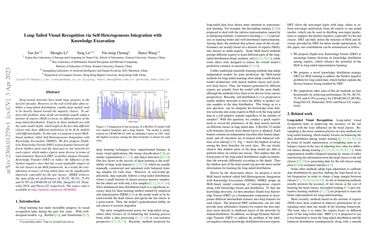Long-Tailed Visual Recognition via Self-Heterogeneous Integration with Knowledge Excavation
Deep neural networks have made huge progress in the last few decades. However, as the real-world data often exhibits a long-tailed distribution, vanilla deep models tend to be heavily biased toward the majority classes. To address this problem, state-of-the-art methods usually adopt a mixture of experts (MoE) to focus on different parts of the long-tailed distribution. Experts in these methods are with the same model depth, which neglects the fact that different classes may have different preferences to be fit by models with different depths. To this end, we propose a novel MoE-based method called Self-Heterogeneous Integration with Knowledge Excavation (SHIKE). We first propose Depth-wise Knowledge Fusion (DKF) to fuse features between different shallow parts and the deep part in one network for each expert, which makes experts more diverse in terms of representation. Based on DKF, we further propose Dynamic Knowledge Transfer (DKT) to reduce the influence of the hardest negative class that has a non-negligible impact on the tail classes in our MoE framework. As a result, the classification accuracy of long-tailed data can be significantly improved, especially for the tail classes. SHIKE achieves the state-of-the-art performance of 56.3%, 60.3%, 75.4%, and 41.9% on CIFAR100-LT (IF100), ImageNet-LT, iNaturalist 2018, and Places-LT, respectively.
PDF Abstract CVPR 2023 PDF CVPR 2023 Abstract


 ImageNet
ImageNet
 CIFAR-100
CIFAR-100
 Places
Places
 iNaturalist
iNaturalist